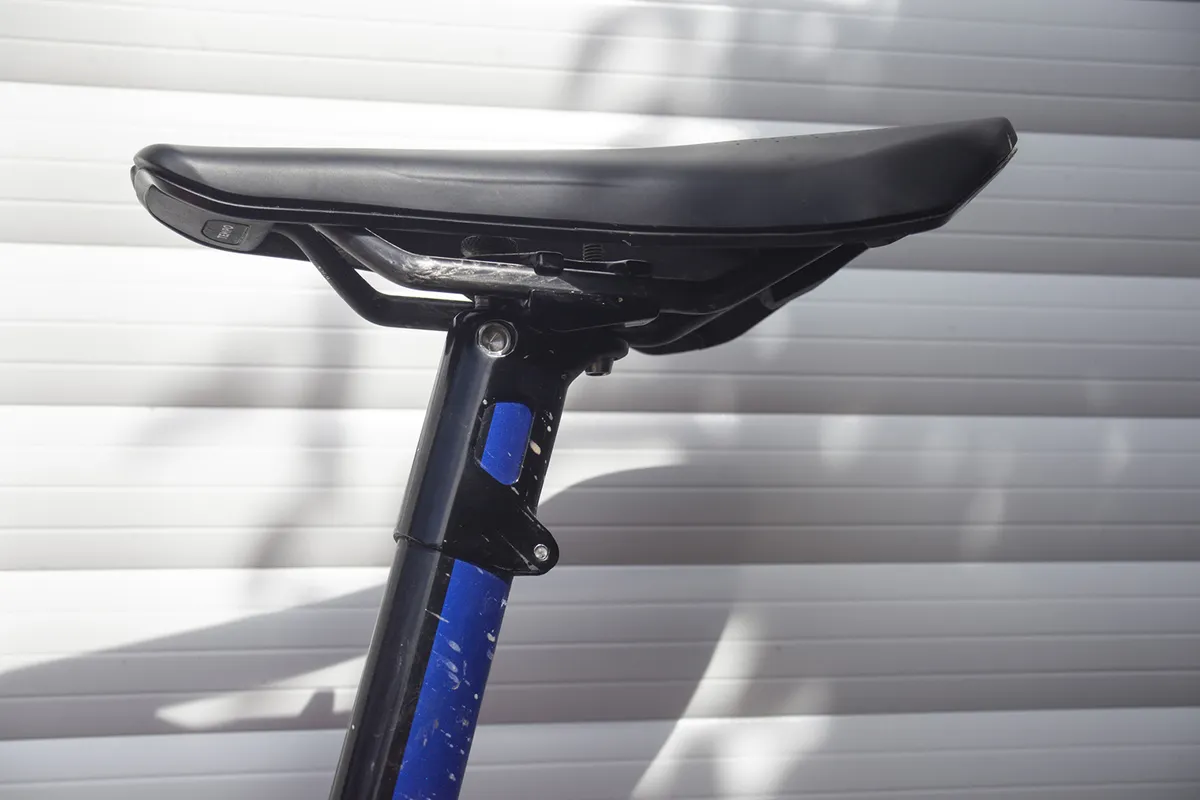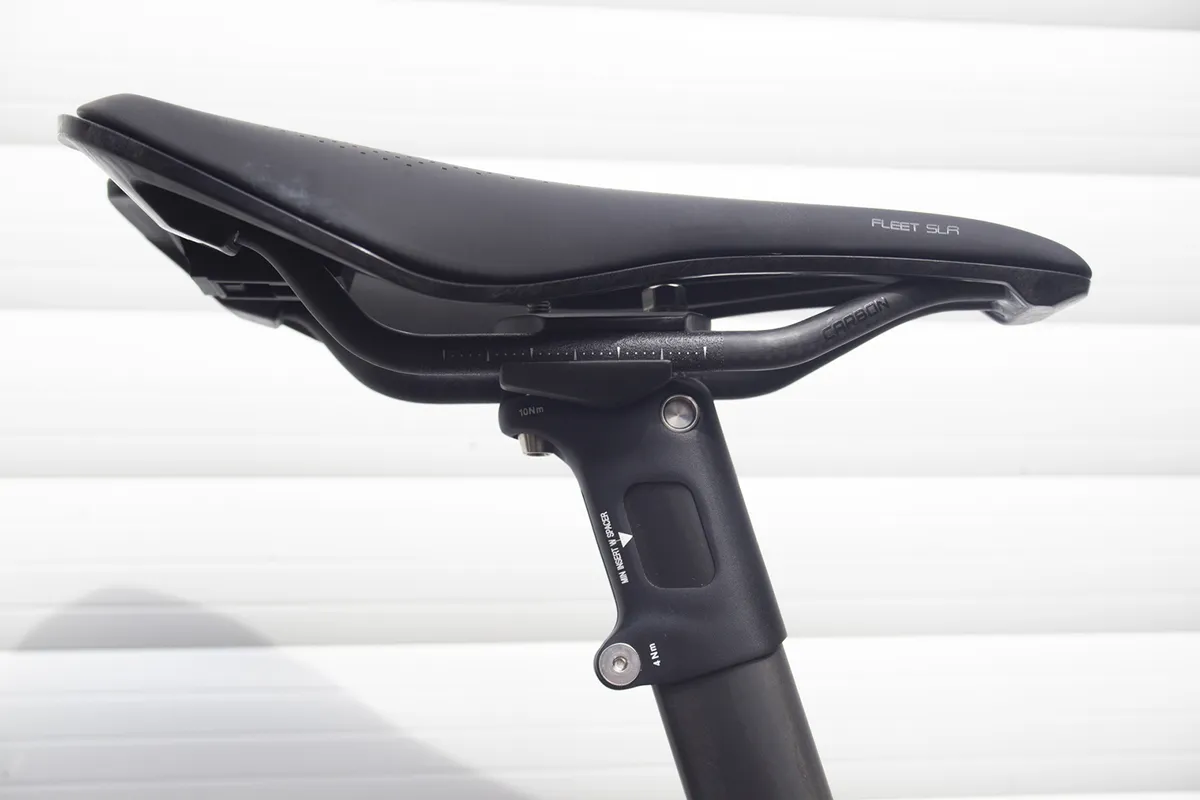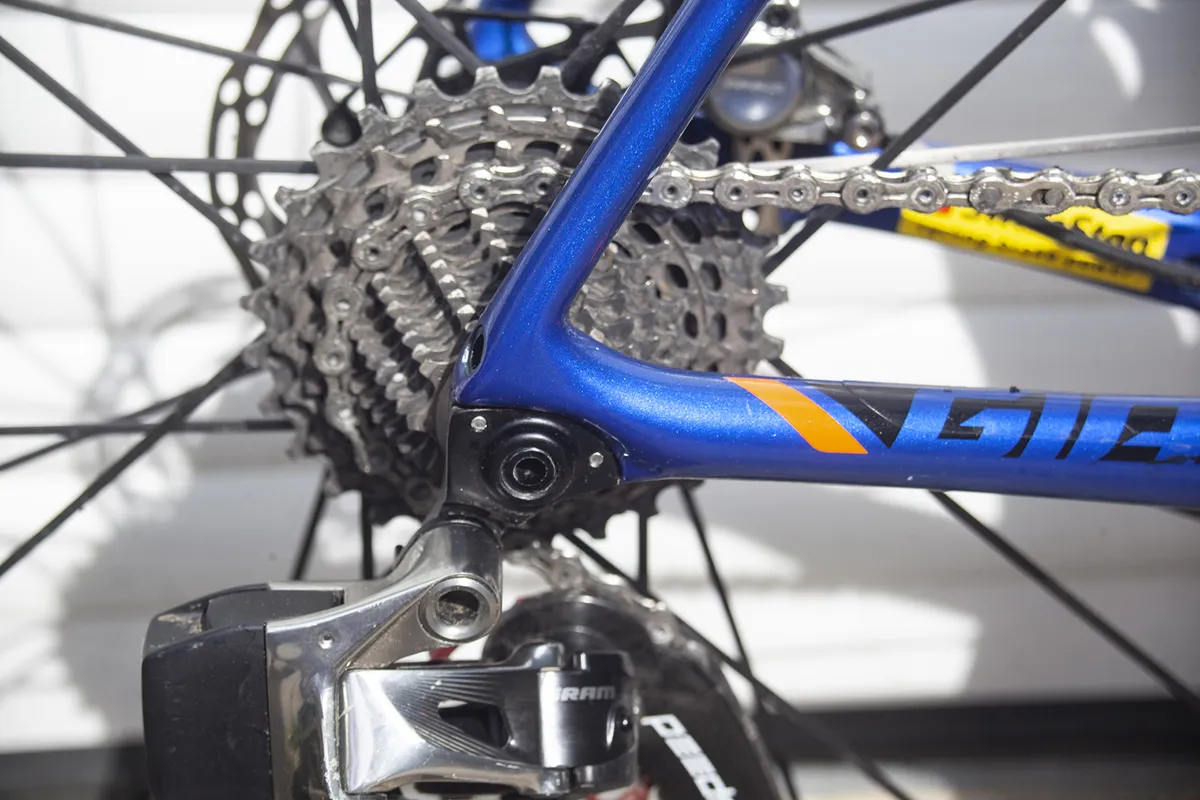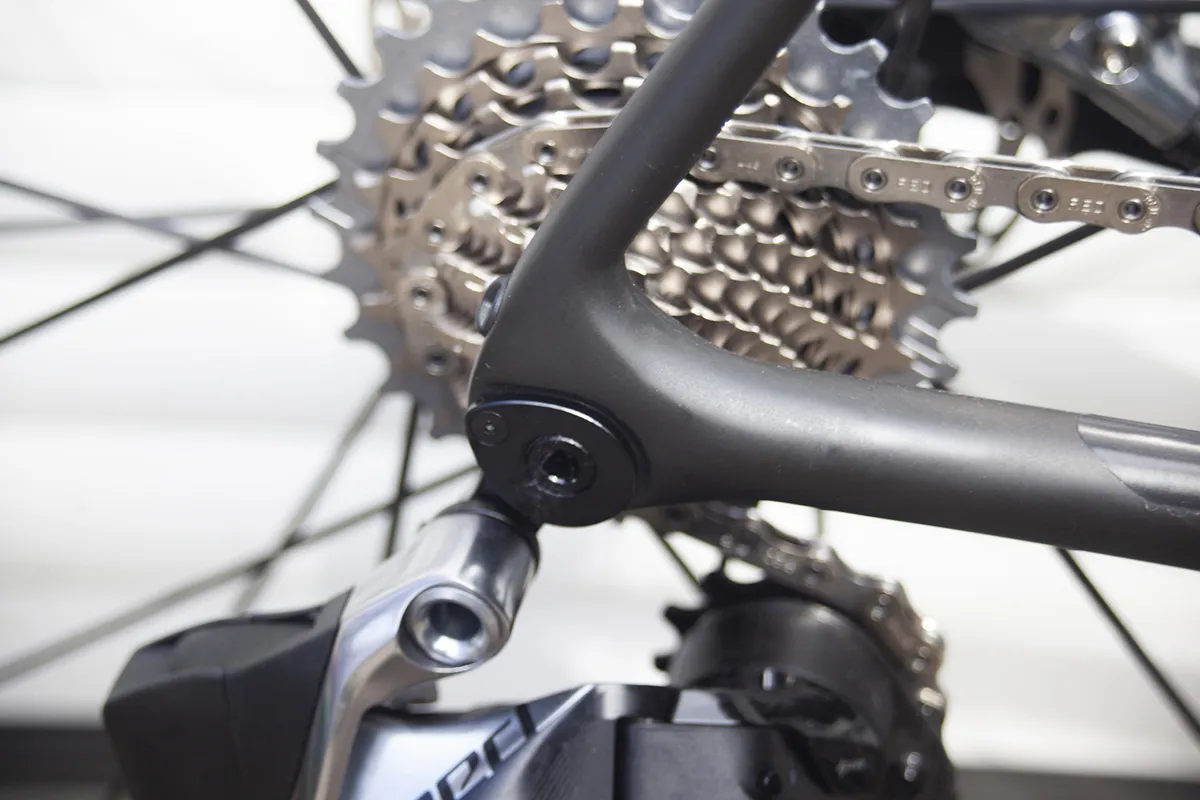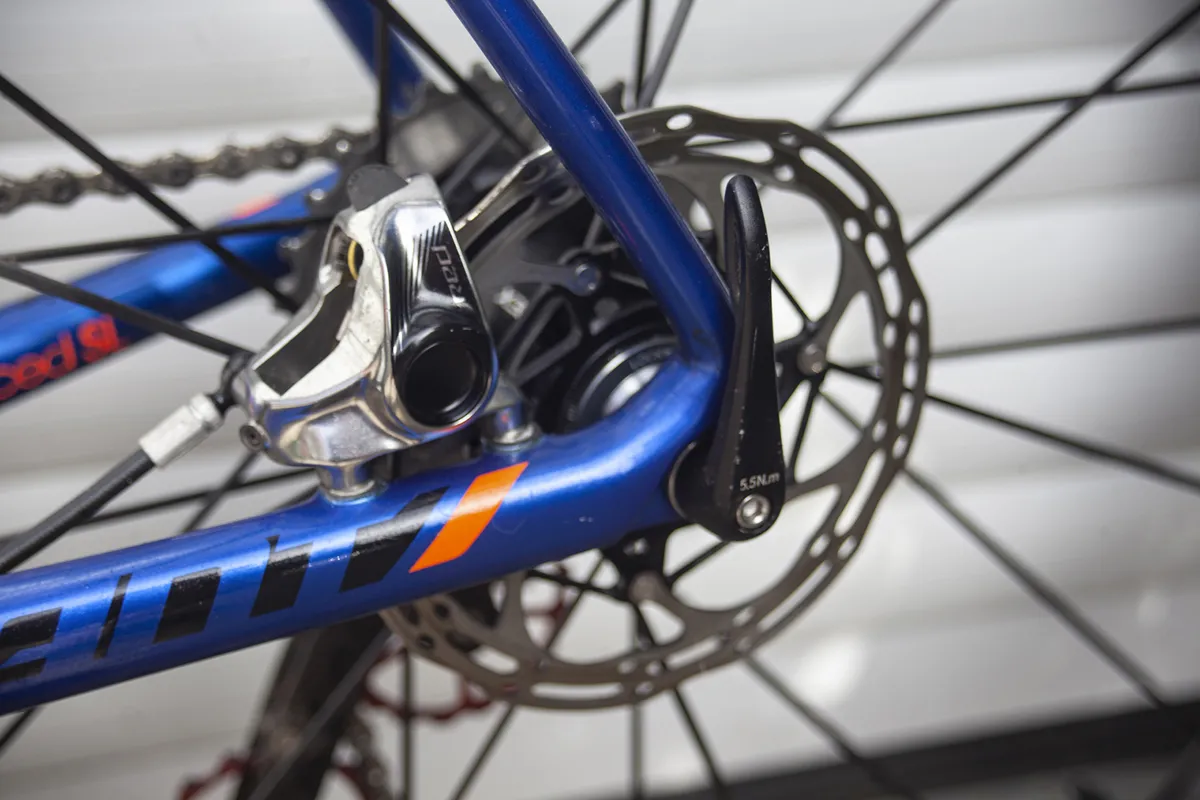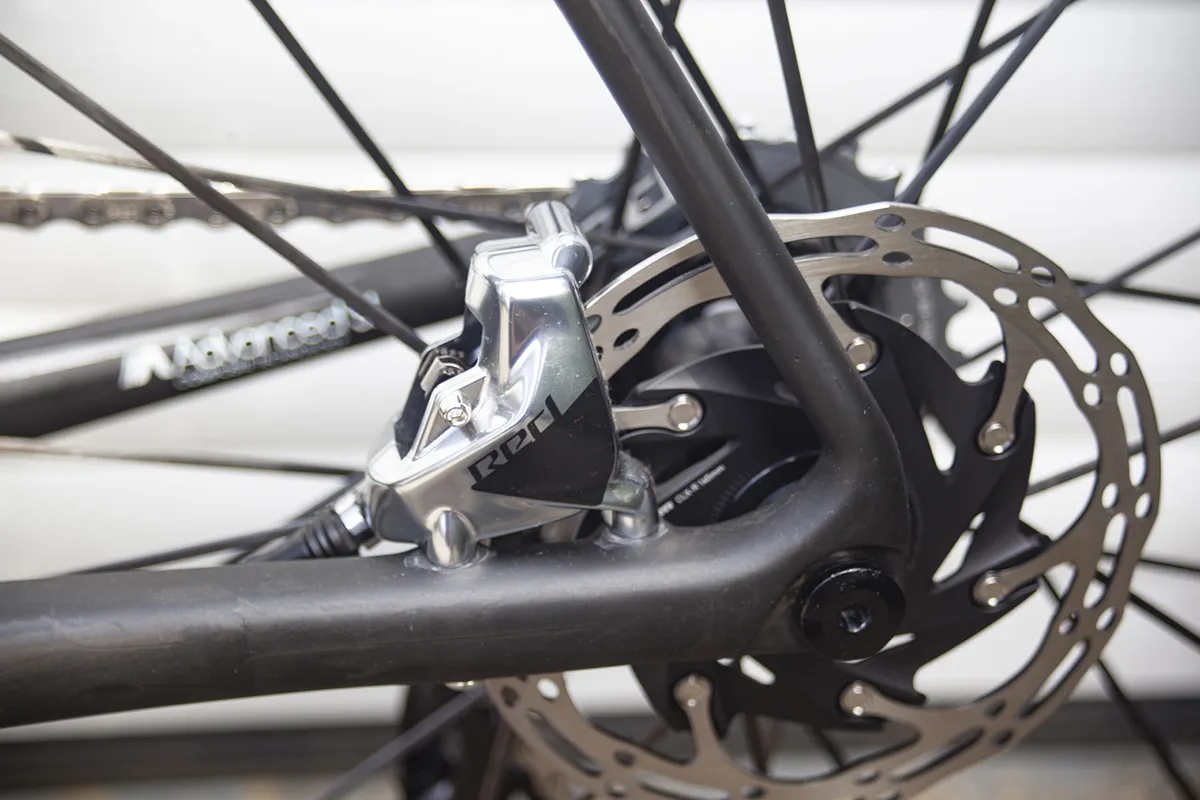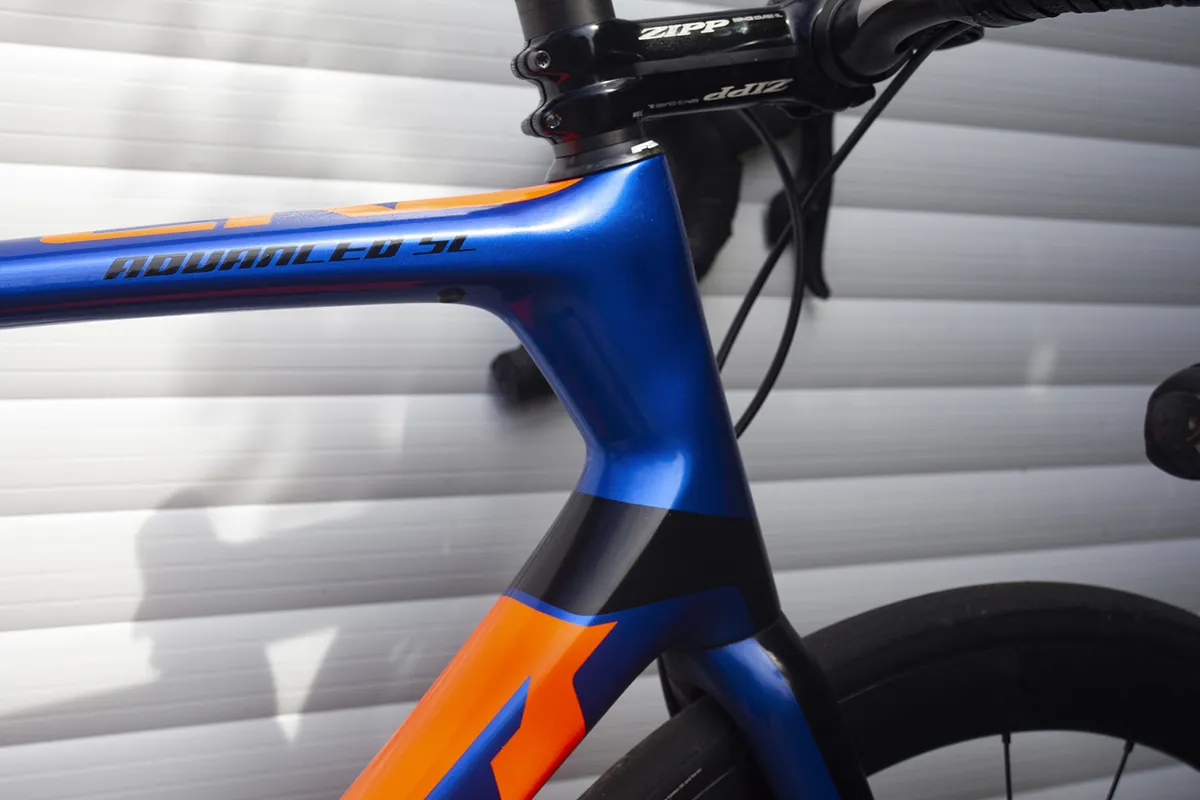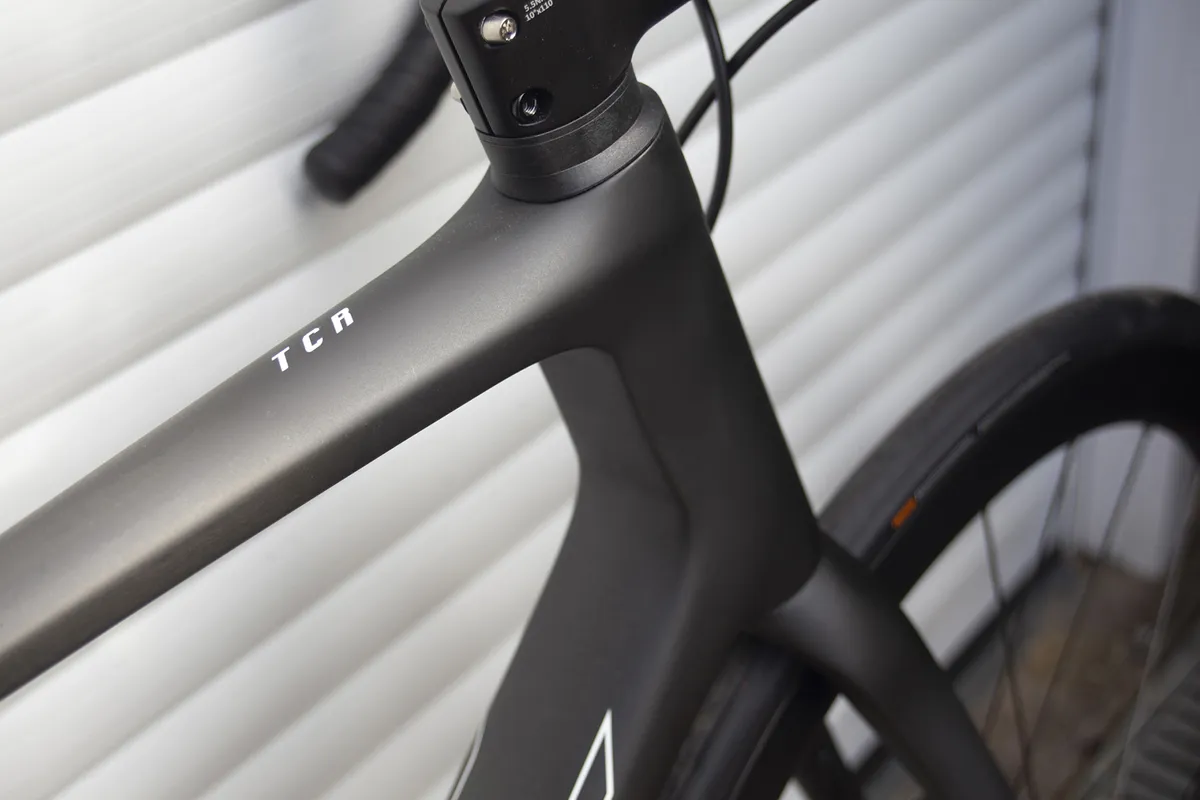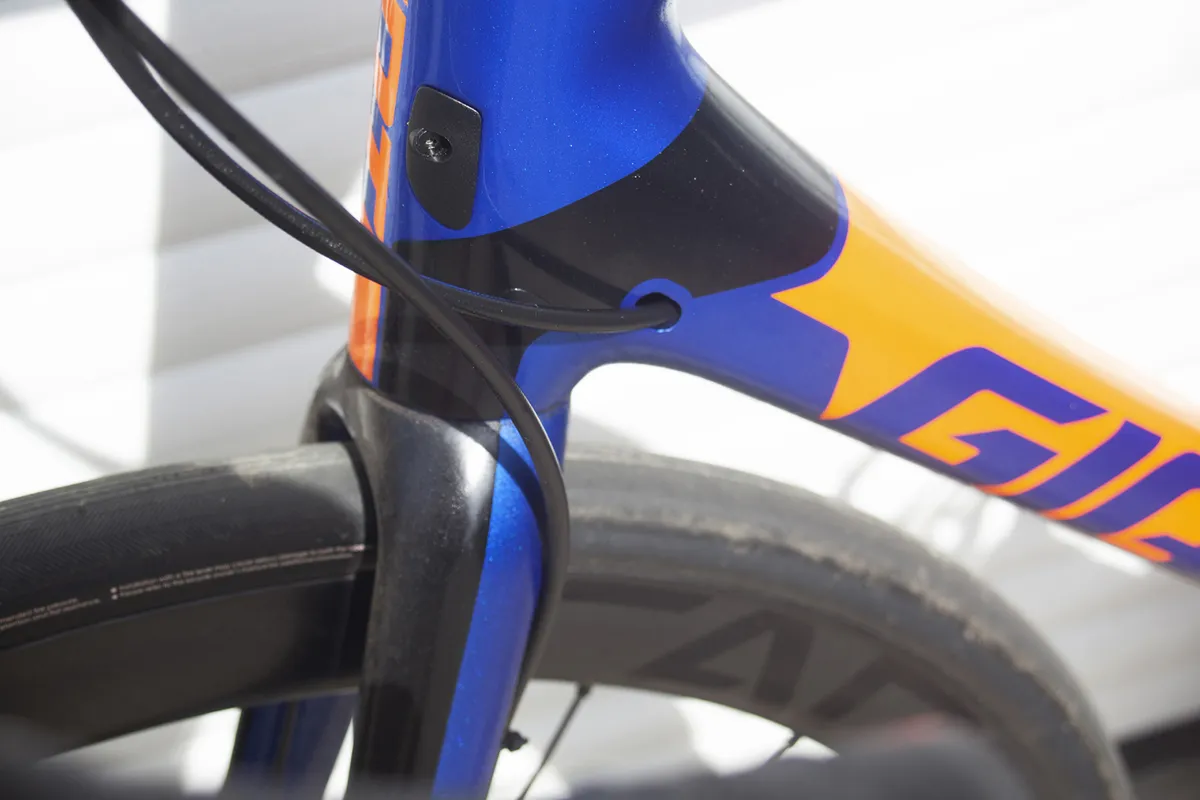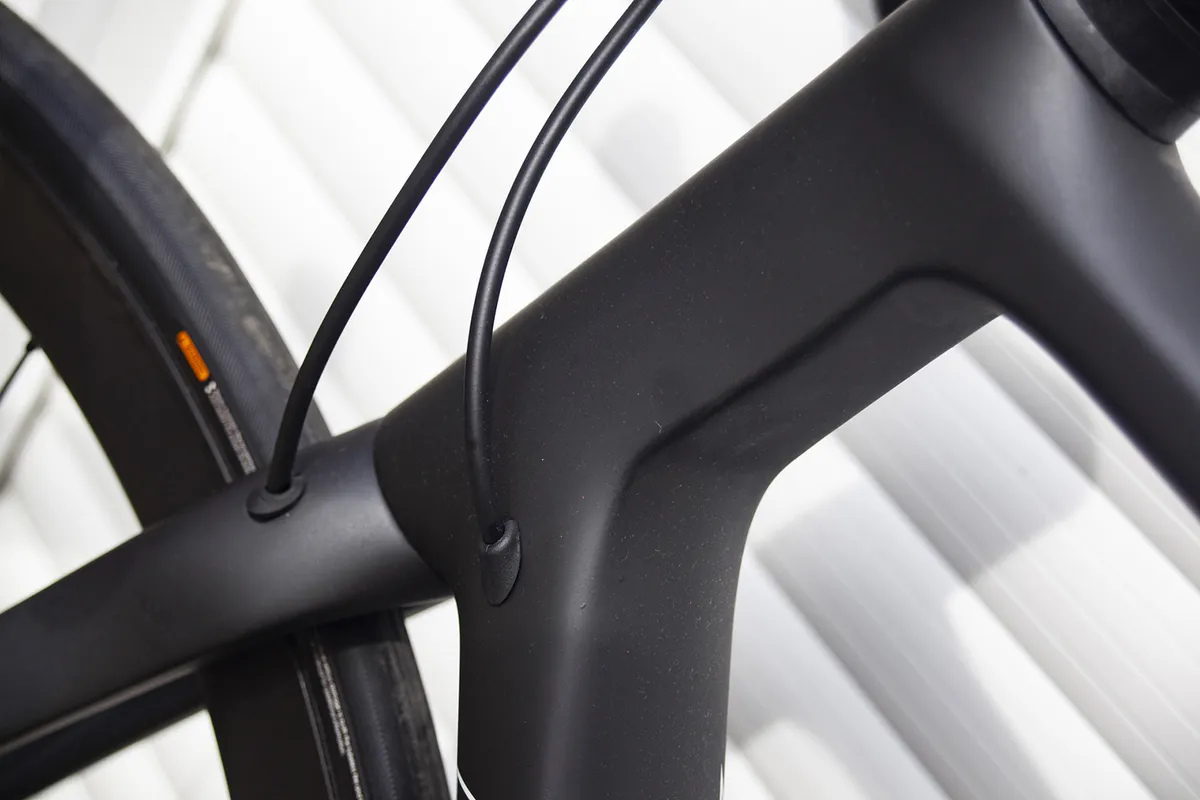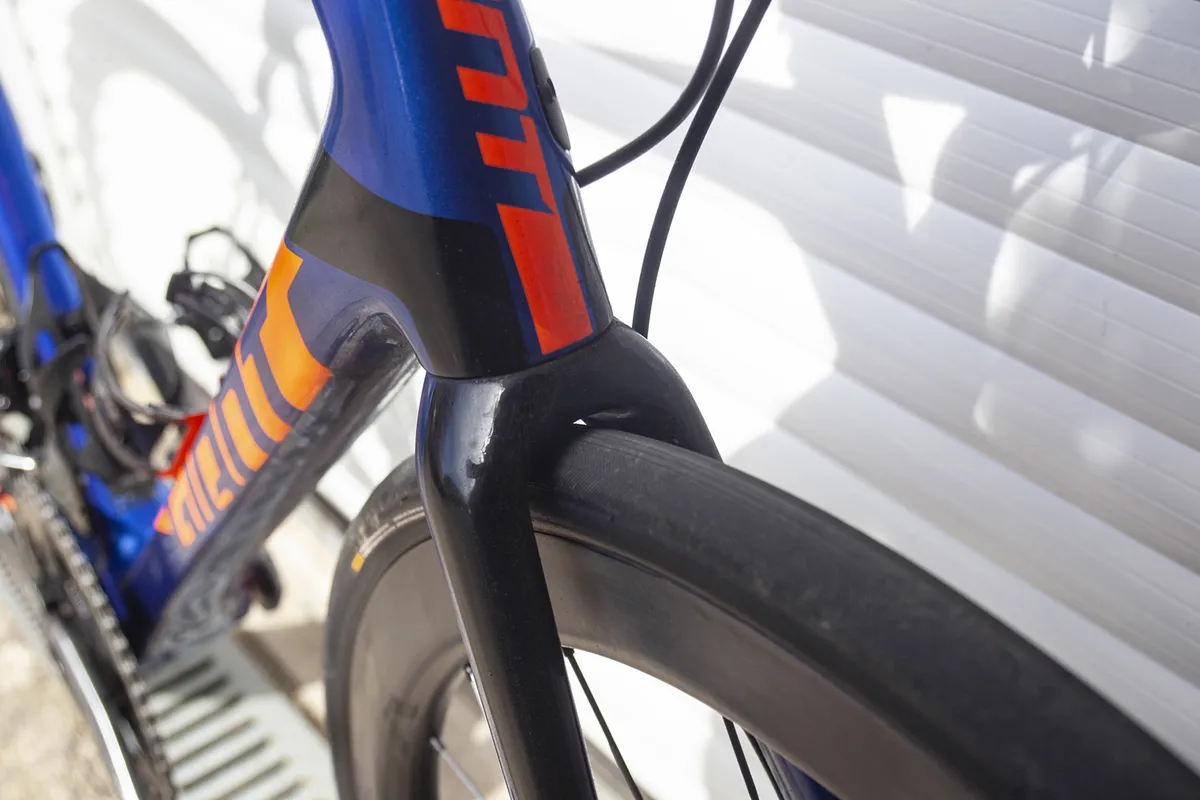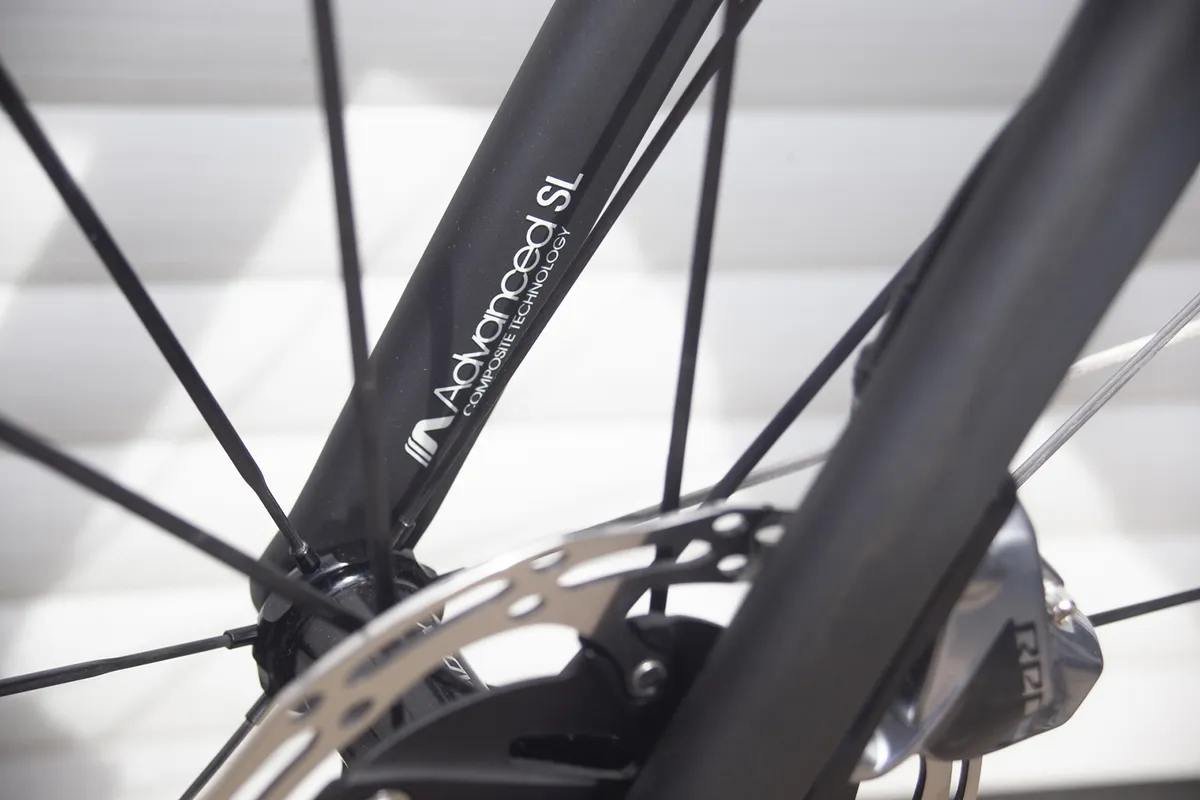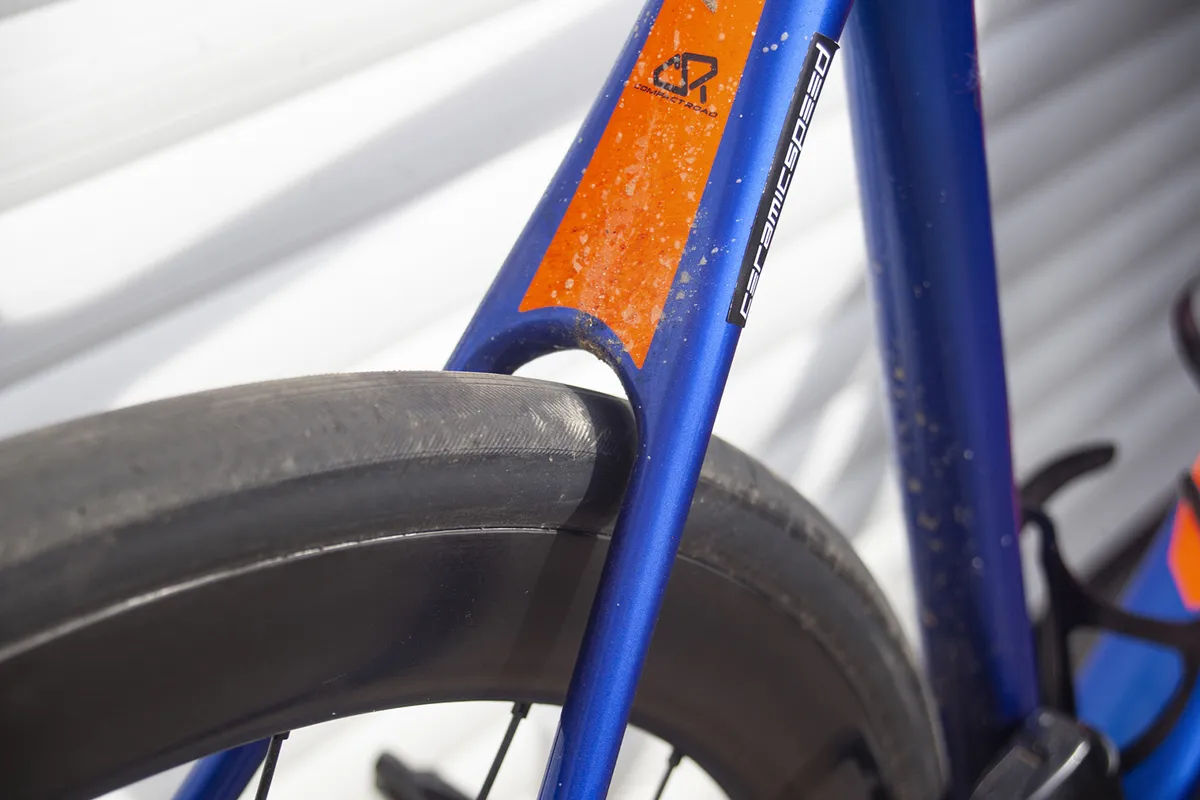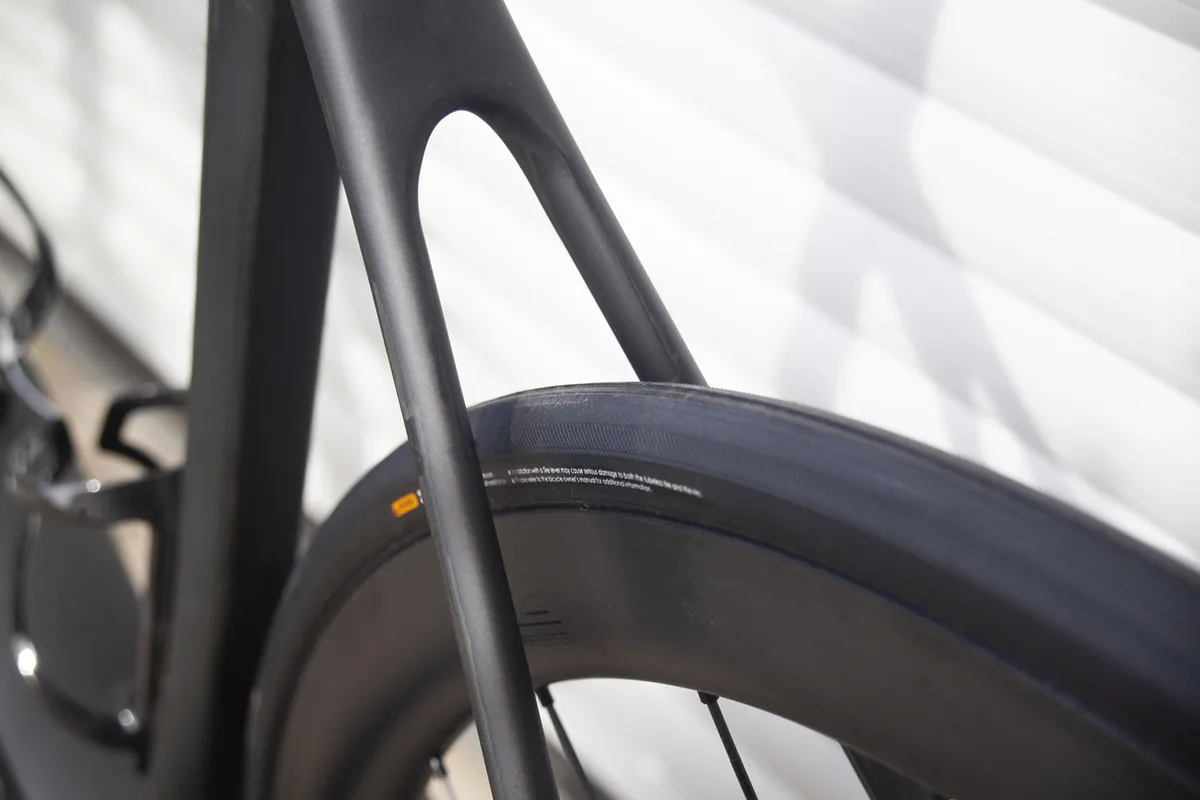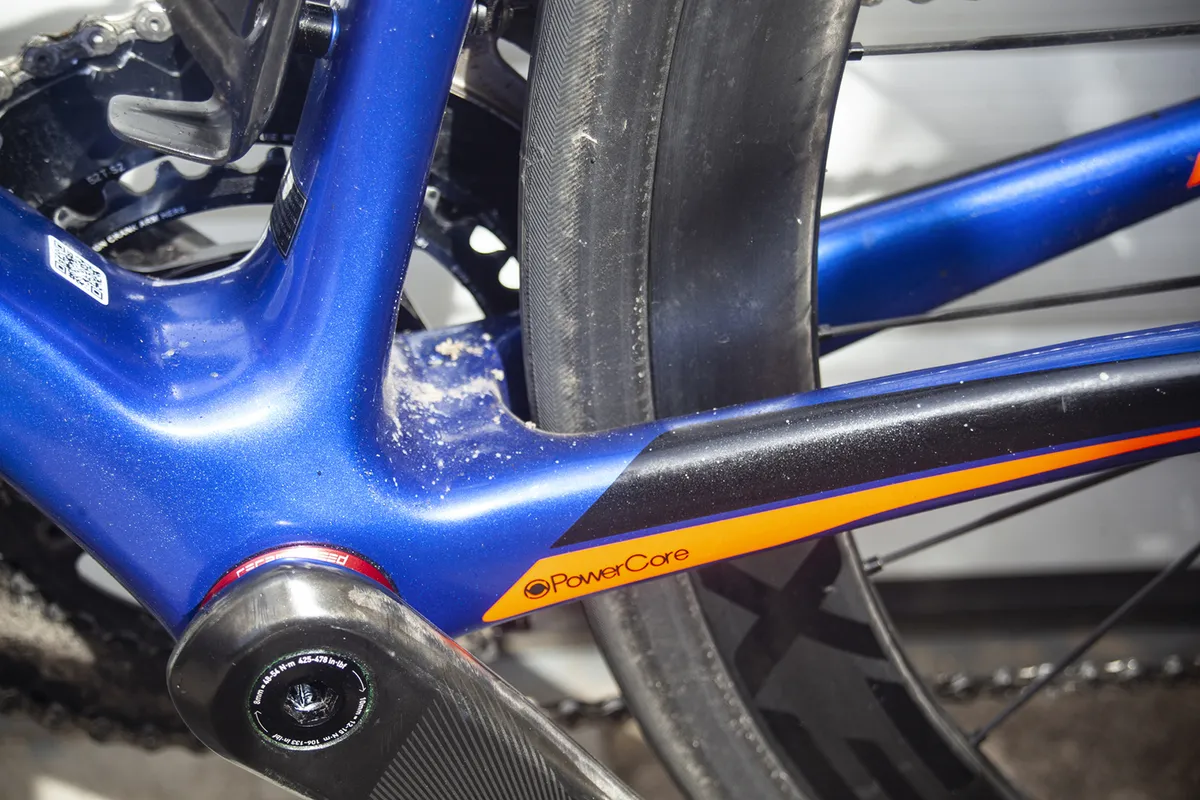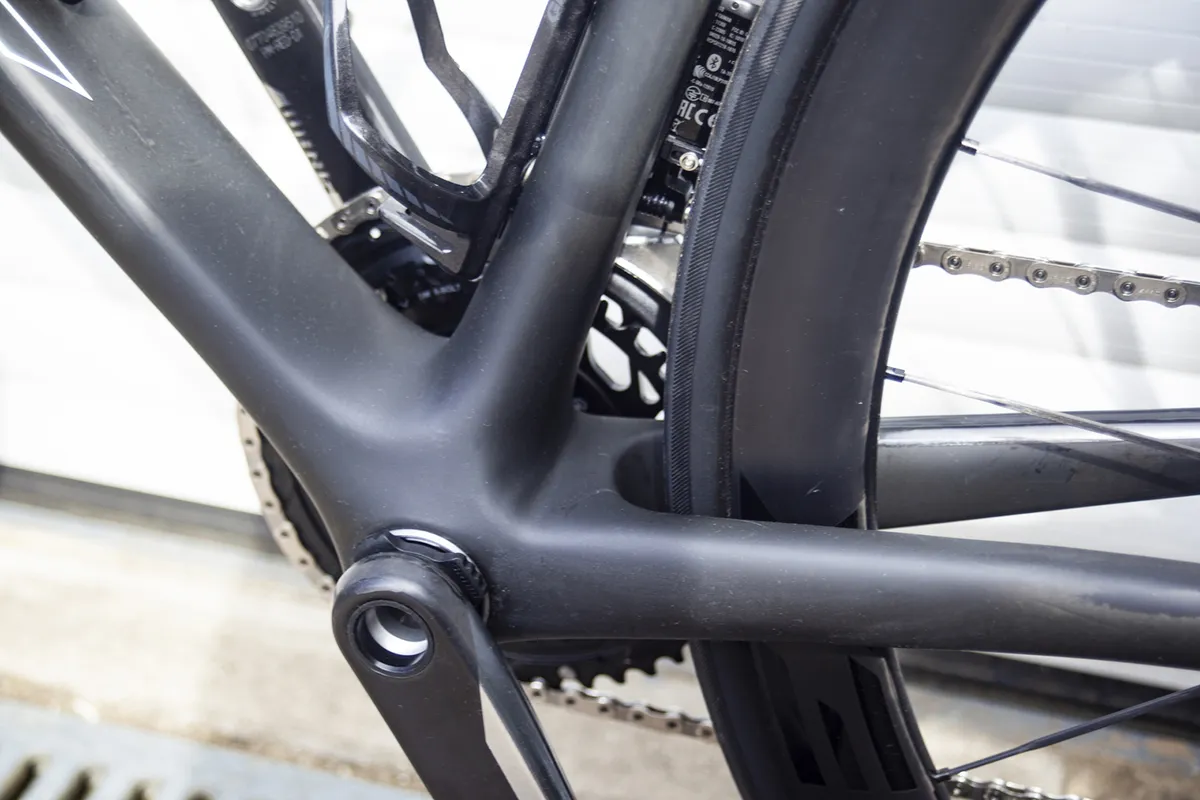With the launch of Giant's updated TCR for 2021 – here's everything you need to know about the new bike – I was interested to find out how the latest flagship (and off-the-peg) Giant TCR Advanced SL 0 compares to my custom-built 2020 Giant TCR Advanced SL.
I’ve been a big fan of the TCR, so much so that when my time was up testing the metallic blue SL you see here, I reached deep into my pockets to pay up to keep it.
- Giant launches ‘lighter, stiffer, more aerodynamic’ TCR
- Best road bikes: how to choose the right one for you
It’s one of the finest bikes I’ve owned, and I put it together with SRAM’s Red eTap groupset (the older 11-speed) and CeramicSpeed upgrades that include the bottom bracket, oversized pulleys on the rear mech and wheel bearings.
I was due to attend the launch of of the 2021 TCR, though due to the Covid-19 pandemic that launch was cancelled. And while I now have the new bike here with me in the UK, testing it properly (and responsibly) as we normally would isn't possible due to current government restrictions.
It has, however, given me chance to paw over every last detail of the bike and compare it directly with my own.
With that in mind, here’s my rundown of the key differences between the two bikes and which one I think wins on each point. This isn't based on real-world testing so let's call it a virtual shoot-out – a BikeRadar battle of the bikes, if you will.
We'll bring you a full review of the 2021 Giant TCR as soon as we can.
1. Looks
What’s interesting here is that Giant hasn’t gone down the route of super-low slung seatstays, as we've seen on a host of new bikes, and what was once a radical looking machine is now much more traditional looking than most of its rivals.
The silhouettes of the two bikes look very similar at first glance, but at closer inspection the 2020 bike gets a more angular head tube junction, while the down tube tapers much more on the older bike.
The 2020 bike also has a slimmer seat tube, but a chunkier junction leading into the ISP (integrated seatpost).
The 2021 bike has a broader fork and the stem is more integral to the bike, making it look like more of a system.
The muted tones of the ThinLine paint finish on the new bike may save more than 50g (according to Giant) over the deep metallic of my 2020 bike's brash blue and orange, but I prefer the boldness of my bike (even though it took a while to get used to). I think I’ve seen enough black bikes over the years.
-
Winner: 2020 TCR
2. Seat mast
The 2020 bike's gloss-finished alloy seat clamp works brilliantly and the twin-bolt clamp is also easy to adjust, but the 2021 version's more sculpted shape and matt finish look a little classier.
The latest model also has saddle rail cradles made from forged carbon composite, so they are lighter.
Add in the promise of a whole new construction method for increased comfort, alongside a new more aerodynamic shape on the mast itself, and it’s the 2021 bike that wins out here.
-
Winner: 2021 TCR
3. Dropouts
The 2020 TCR's rear dropouts are slightly inset, with the added metal hardware finished in gloss. On the 2021 bike the metal inserts are more flush fitting and matt anodised.
The carbon around the driveside rear dropout has less volume too, because its electronic drivetrain-specific frame only needs to accommodate a thin cable (or no cable at all on this SRAM bike) rather than a thicker diameter mechanical cable.
The hardware is redesigned on the mech hanger, which is now a two-piece system that’s said to be stiffer and lighter. It’s the small details that win out here.
-
Winner: 2021 TCR
4. Disc brake integration
There's very little difference between the two bikes here.
Both bikes use direct mount to the rear chainstays and both are about as minimal as it gets. However, the 2021 bike has a slightly larger volume chainstay, so the brake bosses sit slightly less proud.
-
Winner: 2021 TCR
5. Head tube
The 2021 TCR’s head tube was defined by computational fluid dynamics (CFD) and tested in the wind tunnel. It’s an exacting piece of purposeful design that looks totally understated, hiding within it the oversized 'Overdrive system that combines a 1.5in lower bearing with a 1-1/4in upper bearing.
The older 2020 bike has a triangulated, muscular form that looks more organic, and the light bounces of its shoulder ridges and curvier surfaces.
Based on Giant’s own data, the new bike is stiffer and more aerodynamic, but I’ve never found the older bike wanting, so I favour looks here over functionality of design.
-
Winner: 2020 TCR
6. Disc integration
No contest here, the 2021 bike gets fully internal front hose routing and new grommets for the hose entry into the frame.
I was told the 2020 bike's external hose runs on the fork to save weight, but I never quite bought that statement, and the new fork is lighter and stiffer, so go figure…
-
Winner: 2021 TCR
7. Forks
The 2020 bike's asymmetric fork is interesting, with its non-disc side arrow straight and the disc bowing out to incorporate clearance for the rotor.
The 2021 bike goes for a symmetrical design with a more bow-legged shape. It looks a little chunkier than the lithe 2020 model, but it also comes with much greater space for tyres.
-
Winner: 2021 TCR
8. Tyre clearance
Back when the last TCR was conceived, tyres on a race bike never exceeded 28mm, and if you went that big you were considered, well, weird.
I’ve run 28s on my TCR for a couple of years now but that’s more to do with my local road conditions than anything else. However, broader rubber and modern rims do nothing for tyre clearance and the 2020 is at the limit here.
The 2021 bike, with its new seatstay design, offers heaps of clearance – up to 32mm – so it’s another win for the new kid on the block.
The 2021 bike also has the Yoke of the seatstays raised up by 45mm, which lightens up the back and looks a lot more elegant with it.
- Winner: 2021 TCR
9. Bottom bracket shell
Giant’s 86mm-wide PowerCore bottom bracket shell hasn’t really changed much between generations. It’s the same in volume, it's just the joints between the shell and the main tube that have become a little more angular and increased the tyre space available.
The platform created by the chainstay joint on the 2020 bike is a pain to keep clean (as you can see), but I reckon the introduction of a more angular ridge where it meets the seat tube on the 2021 model is going to be a trap for grime, so it’ll take some cleaning, too.
-
Winner: 2020 TCR
10. Weight
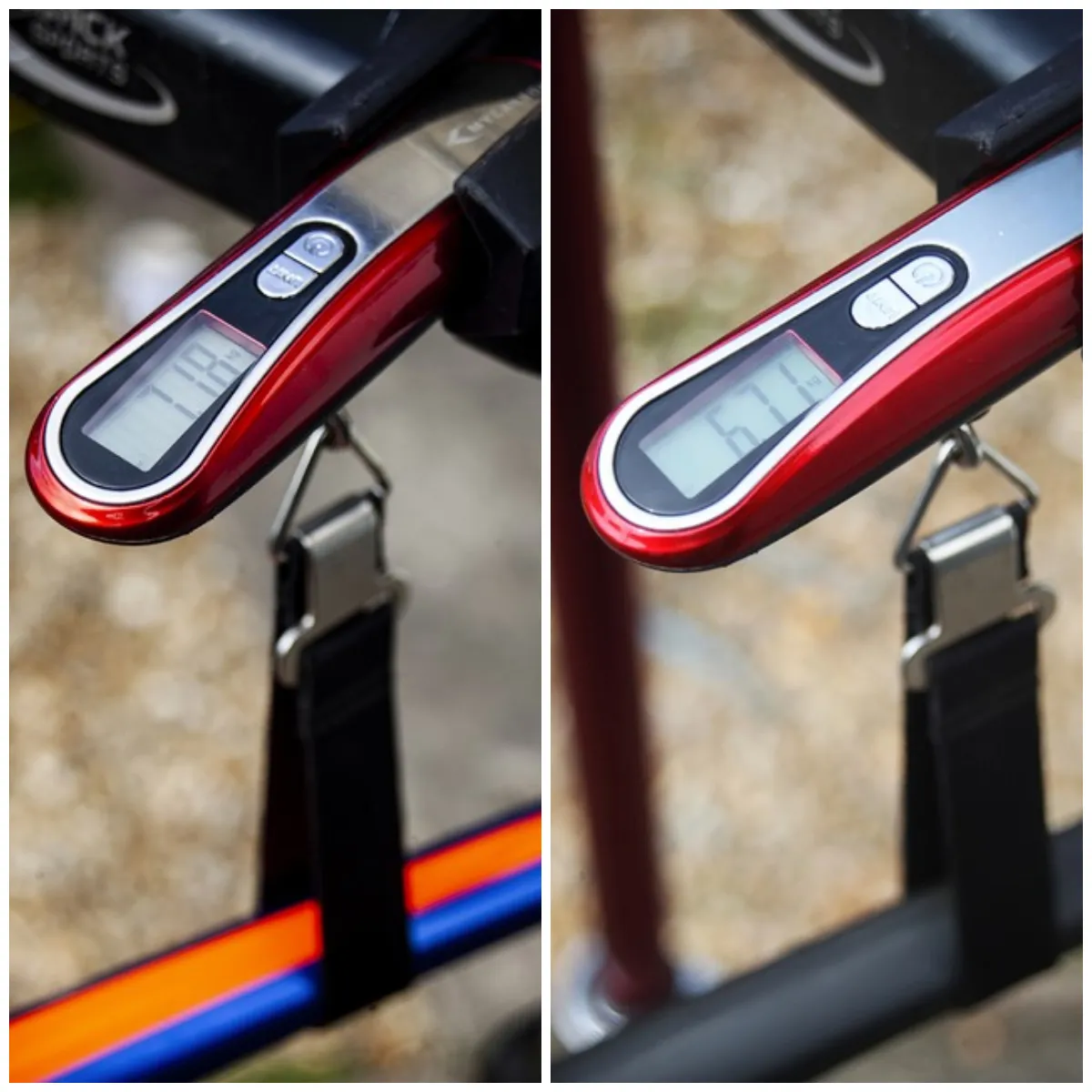
The comparison I wanted to make here was between both bikes setup ready to go riding, so both are set up to my liking: ISPs are both cut down to a 79cm saddle height, both are running two bottle cages and have Shimano Ultegra pedals fitted. Both are also running Giant’s new flyweight (1,327g a pair) Cadex 42 wheels.
The result? As you can see, my own bike tips the scales at a damn light 7.18kg, with its CeramicSpeed upgrades, Red eTap group and lightweight Vision carbon bar.
But the 2021 bike with its Giant Contact SLR components and Red AXS group weighs in at 6.71kg – that’s 470g, or nearly half a kilo, lighter.
Okay, we're not comparing apples to apples here, but with the 2021 TCR chassis considerably lighter than the 2020 model, you can see the kind of weight it's possible to achieve.
-
Winner: 2021 TCR
Verdict... 7-3 to the 2021 TCR
The 2021 model is a resounding winner at 7 to 3 in my rather arbitrary rating system.
However, looking into some of the details here has revealed how Giant has gone down into the nitty-gritty when redesigning the TCR.
Now I can’t wait to see how the 2021 bike stacks up on the road, when I can ride it for real.
Full specs and weights
2020 TCR Advanced SL custom
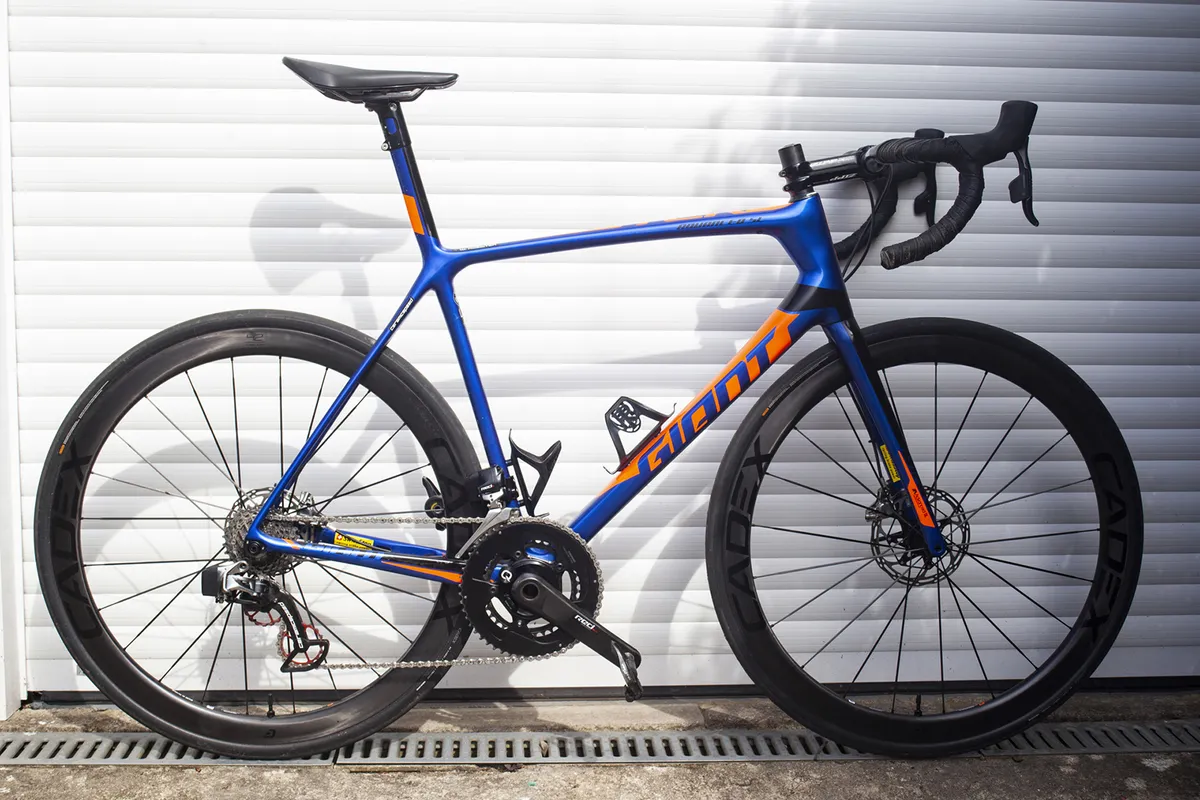
- Weight: 7.18kg (L) ISP cut to 79cm saddle height
- Frame: Advanced SL-grade carbon composite, integrated seatpost, disc
- Fork: Advanced SL-grade composite, full-composite OverDrive 2 steerer, disc
- Bar: Vision Metron 4D carbon bar
- Stem: Zipp Service Course SL stem
- Seatpost: ISP
- Saddle: Fizik Tempo Argo R1
- Gears: SRAM Red eTap with CeramicSpeed OSP upgrade, 52/36, 11-28, and Quarq D-Zero power meter
- Brakes: SRAM Red with 160mm rotors
- Wheels: Cadex 42mm Disc WheelSystem
- Tyres: Cadex 28c tubeless tyres
- Extras: SRAM out-front Garmin Mount, Shimano Ultegra pedals, 2 x Ritchey carbon bottle cages
2021 TCR Advanced SL 0 Disc
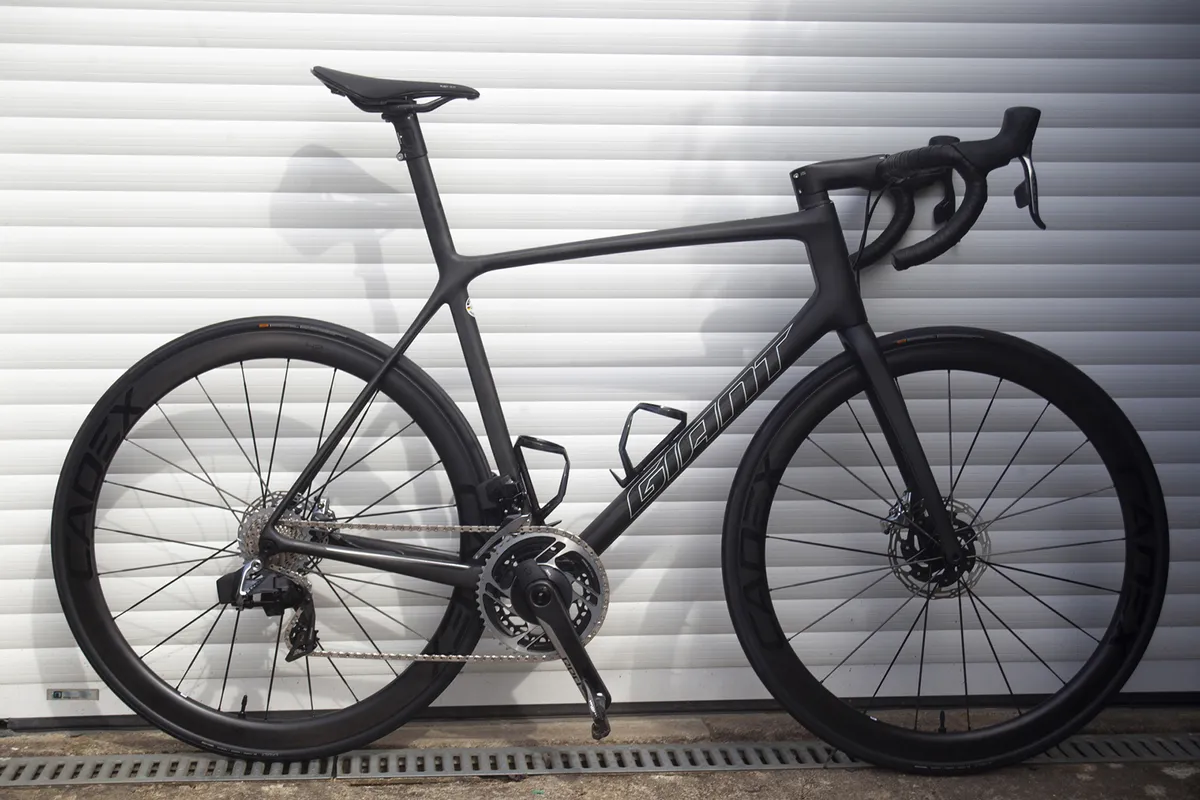
- Weight: 6.71kg (L) ISP cut to 79cm saddle height
- Frame: Advanced SL-grade composite, integrated seatpost, disc
- Fork: Advanced SL-grade composite, full-composite OverDrive 2 steerer, disc
- Bar: New Giant Contact SLR
- Stem: New Giant Contact SLR
- Seatpost: Integrated design, two clamps 25mm/45mm
- Saddle: New Giant Fleet SLR
- Gears: SRAM Red eTap AXS 48/35, 10-28 with Quarq DZero power meter
- Brakes: SRAM Red eTap AXS hydraulic, 160mm/140mm rotors
- Wheels: Cadex 42mm Disc WheelSystem
- Tyres: Cadex 25c tubeless tyres
- Extras: Tubeless sealant, out-front mount (Garmin, Wahoo, Giant compatible), two Giant bottle cages, Shimano Ultegra pedals
